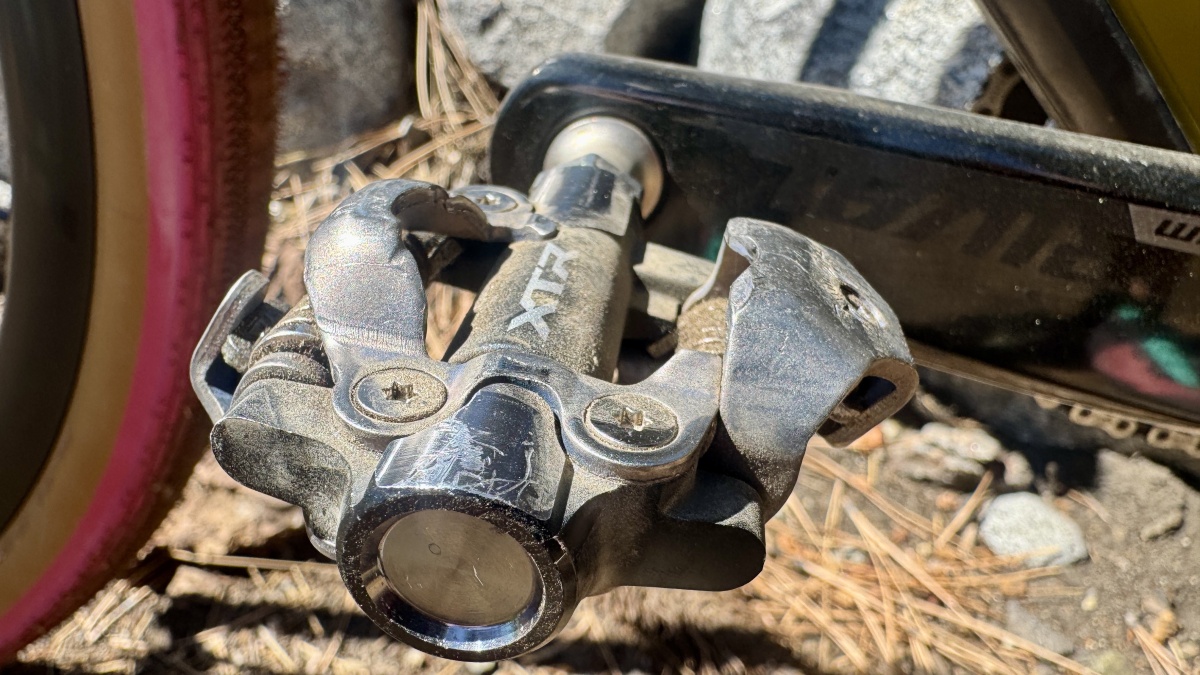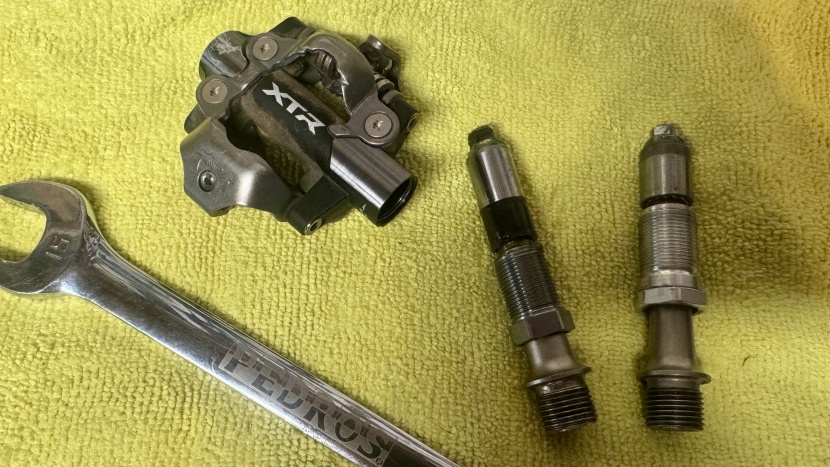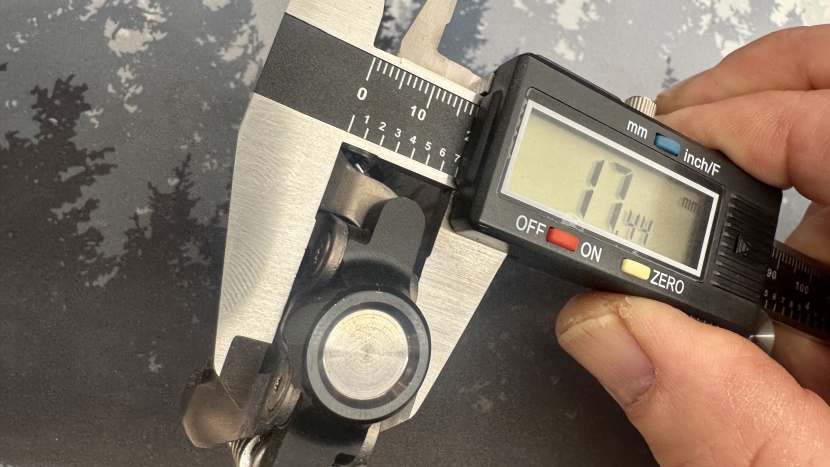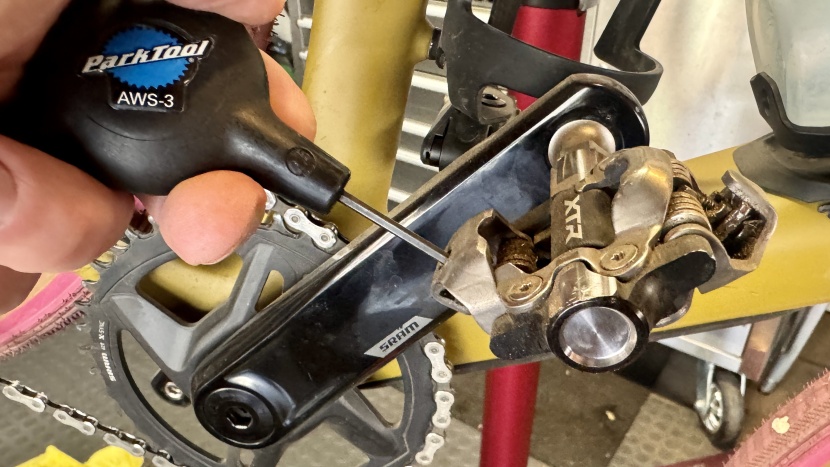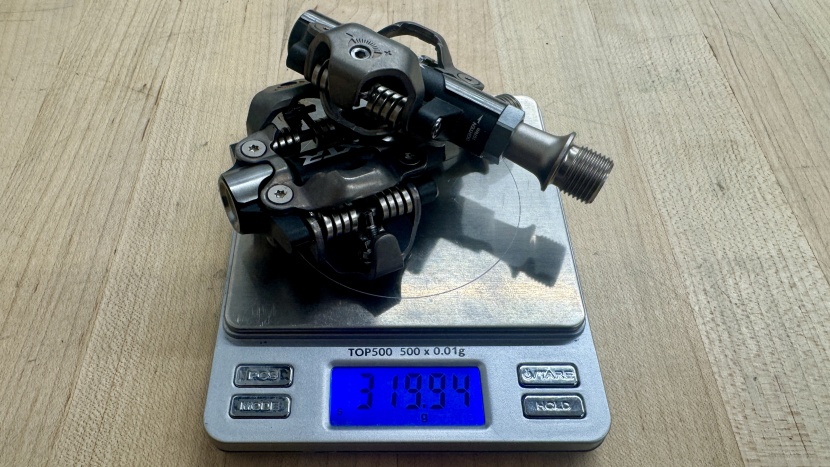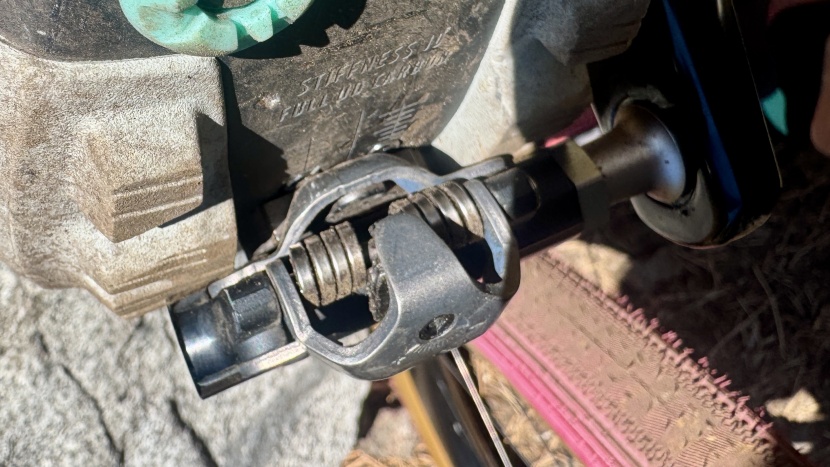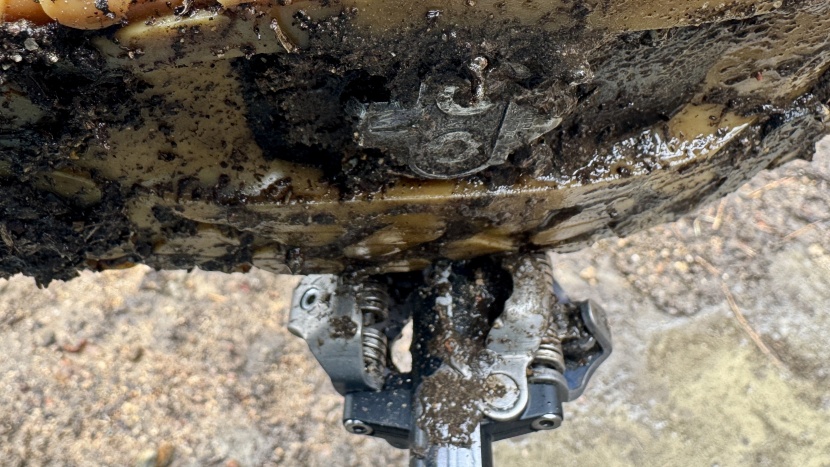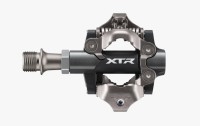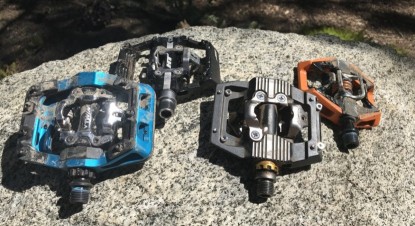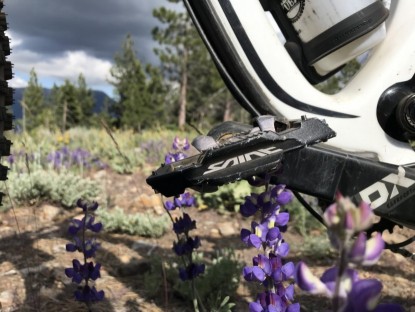
Our Verdict
Our Analysis and Test Results
Seven years after releasing the mildly updated M9120, Shimano unveils the M9200 XTR pedal that looks almost identical to its predecessors. On one hand, Shimano knows when to leave good enough alone, but on the other, this is an underwhelming update to their flagship pedal.
Ease of Entry
The M9200 continues with a wide-open, easy-to-access binding. Stepping into this pedal, like its predecessor, requires little skill or force. The binding seems to pull your cleat into the pedal with an exceptionally low amount of force, and the pedal platform doesn't complicate entry. Surprisingly, Shimano didn't make the pedal any thinner; the 9200 has a profile measurement of just over 17mm. This was impressive in 2017, but other pedals let you sit lower in the cockpit while being less prone to pedal strikes.
Ease of Exit
Getting out of the M9200 requires very little effort, but I never had an accidental release when they were at my preferred tension. You know the moment they release because you hear an audible click and feel the pedals binding let go of your clear. The cleat feels almost slippery within its range of float, but the release force requires a bit of extra movement; it always feels consistent.
Adjustability
As with previous SPD pedals, four tension screws (one on each side of each pedal) control the release tension. At the lighter end of the spectrum, you can set the cleat to disengage with a light twist of the heel; they feel very user-friendly. At the other end of the spectrum, the binding can be set to hold your cleat tightly, but it doesn't affect the feel of the float. Disengaging requires a sharp twist outward, but it never feels overbearing. If you want extreme hold, the OneUp Clip pedal has significantly stronger binding springs.
Adjustments to the release tension are made with a 3mm Allen key. Users must adjust the pedals uniformly to prevent one side of the pedal from having different tension. Shimano SH-51 cleats come with the pedals and provide 4 degrees of float. Users can opt for aftermarket SH-56 multi-release cleats, allowing for disengagement by pulling upward, inward, or outward. The axles do not have a wrench flat, so putting them on or taking them off requires an 8mm Allen wrench inserted into the back of the hollow axle. The pedal has 4 degrees of float and a 13-degree release angle. Standard pedals have a 55mm stance, and the -3 mm axles give you a 52mm stance.
Weight
At 320 grams, they're actually 6 grams heavier than the previous XTR race pedal. Any discussion of weight should consider the trade-offs with durability, but a few months of use haven't proven these pedals to be any more or less durable than the past model.
The SPD cleats add 51 grams to the system weight, which is 19 grams more than a set of Crank Brothers brass cleats. 320 grams is respectably lightweight for an XC or trail pedal, but they're not competitive with the Crankbrothers Eggbeater 3 at 280 grams or the Time ATAC XS at 293 grams. True weight-weenies should look to the Eggbeater 11 Titanium at a mere 179 grams per pair.
Platform
It feels odd to discuss the platform of a platformless pedal, but the elongated pedal body creates more contact with your shoe, providing additional lateral stability. The part of your sole beside the cleat channel rests on the center of the pedal, which provides 67mm of support for your shoe. This feels adequate for most footwear, but we're admittedly spoiled by pedals with a bit more support.
The additional lateral support provides better power transfer and a more secure feel, so they're probably worth the additional grams. Shimano's smaller pedals give you a feeling akin to standing on ice cubes. The float feels slippery and friction-free throughout its range with a definitive endpoint release. That slippery feel is less disconcerting with the support of the wider axle area.
Mud Shedding Ability
There are a few subtle changes to the pedal's shape, including a round axle chamber, a wider platform, and a smaller fixing bolt, but none of these seem to affect the pedal's ability to shed mud. Shimano is tight-lipped about some of their technology, and whether the bindings use a fluorine coating or not, I can't confirm.
What you probably want to know is how hard they are to get into when your cleat bed is jammed up with mud and debris, and the answer is easy-peasy. That effortless, smooth entry that you experience when the pedals are dry is largely unchanged by the elements and sticky stuff on your shoes. Engaging the binding happens with the same reassuring click each time, and mud never seems to build up in the recess between the body and the binding. If you're racing cyclocross or pushing your bike through a muddy bog, these are the pedals you want.
Value
Nothing with XTR laser-engraved on its surface is cheap, and the M9200 pedals are no exception. We tend to get many years of service out of Shimano SPD pedals, so amortizing the purchase over many years makes us feel better about the purchase. We had some problems with the seals and bearings in the last generation of XTR pedals, and while covered under warranty, it left us with a feeling of compromised design. The XT line is usually where the value is found in Shimano's line, but we don't “yet” have an XT equivalent of this pedal.
Conclusion
I'd like to comment on the pedals' reliability, but I've only been riding them for about a month. During this time, I've had no issues with the seals, unlike the M9100 pedals, with which I experienced problems almost immediately. Should they prove to be as reliable as most other SPD pedals, they offer a small but meaningful improvement over past iterations while keeping the consistent binding performance and bearing quality that Shimano's top-of-the-line offering is known for.
| Awards | Best XC / Gravel Pedal |
|---|---|
| Price | $200 List Check Price at REI |
Overall Score  |
|
| Star Rating | |
| Bottom Line | A more stable version of the minimal SPD platform with exceptional mud-shedding capabilities |
| Pros | Lightweight, low profile, available in 2 different axle lengths |
| Cons | Minimal differences from past generation, Mountain bikers may want a more substantial platform |
| Rating Categories | Shimano XTR M9200 |
| Ease of Exit (25%) | |
| Ease of Entry (20%) | |
| Adjustability (20%) | |
| Weight (15%) | |
| Platform (10%) | |
| Mud Shedding Ability (10%) | |
| Specifications | Shimano XTR M9200 |
| Weight per Pair (grams) | 320g |
| Weight of Cleats and Bolts (grams) | 51g |
| Cleat Type | SPD mountain |
| Style | no cage |
| Platform Dimensions (lxw) | 71 x 67 mm |
| profile height | 17mm |
| Stance | 55mm |
| Total Width from Crank Arm | 91mm |
| Entry | 2-sided |
| Adjustable Tension | yes |
| Traction Pins | 0 |
| Bearings | dual angular contact, metal retainer |
| Cage Material | annodized aluminum |
| Pedal Wrench Type | 8mm allen |


